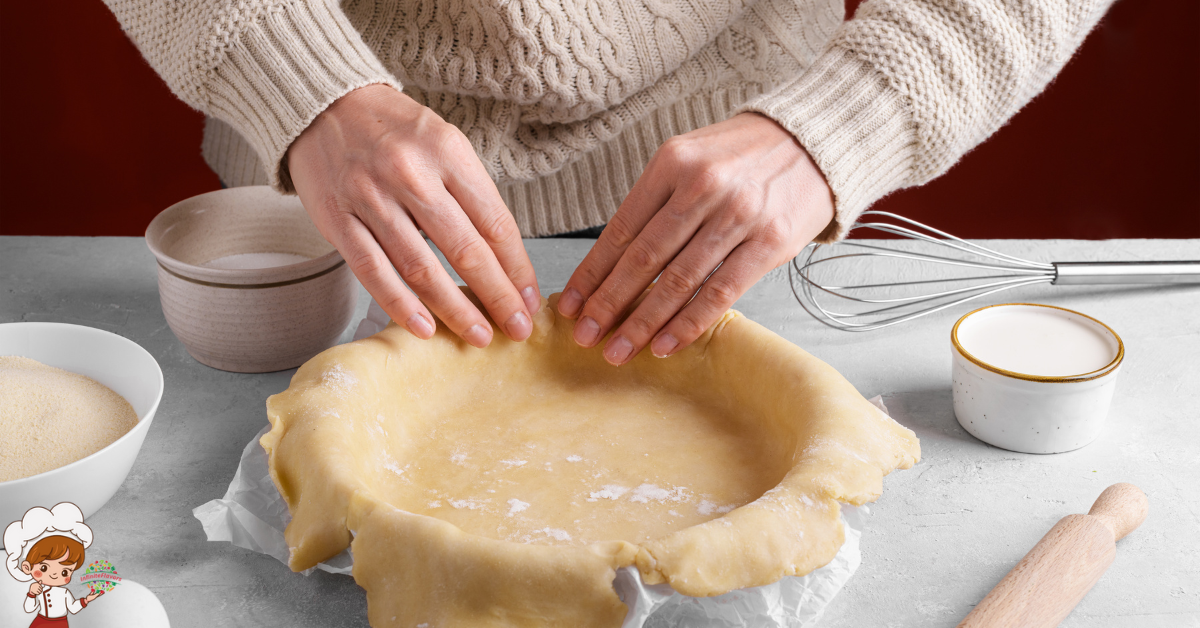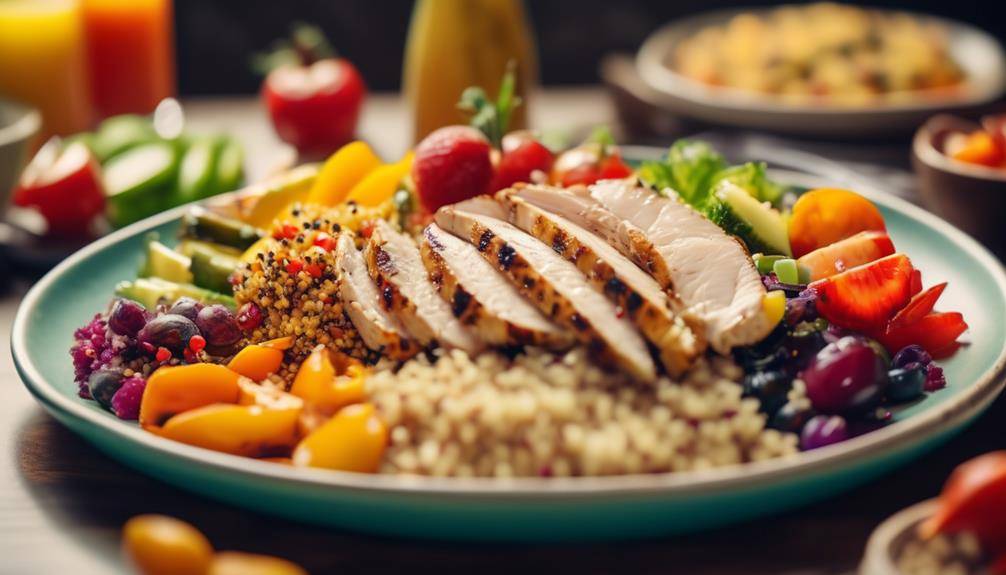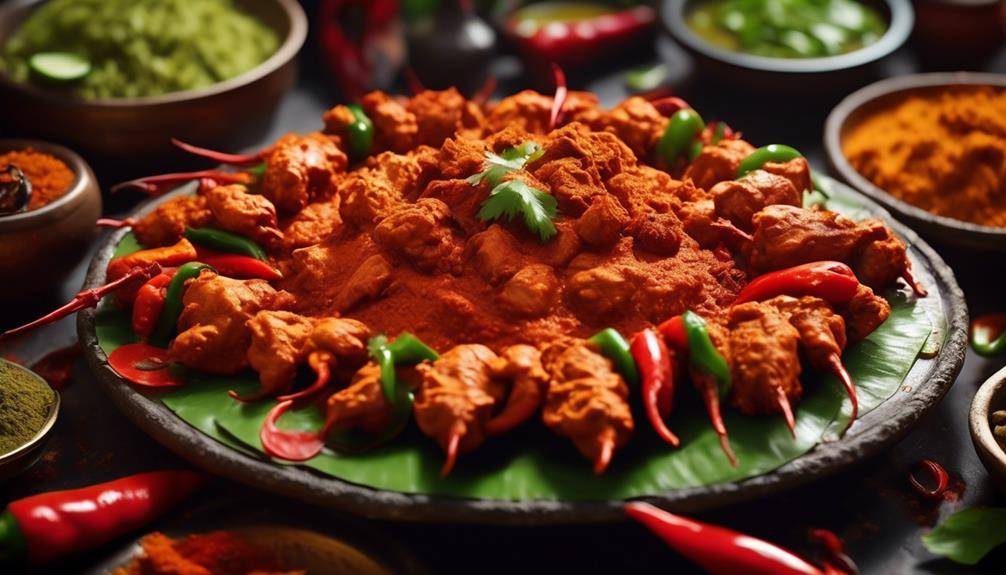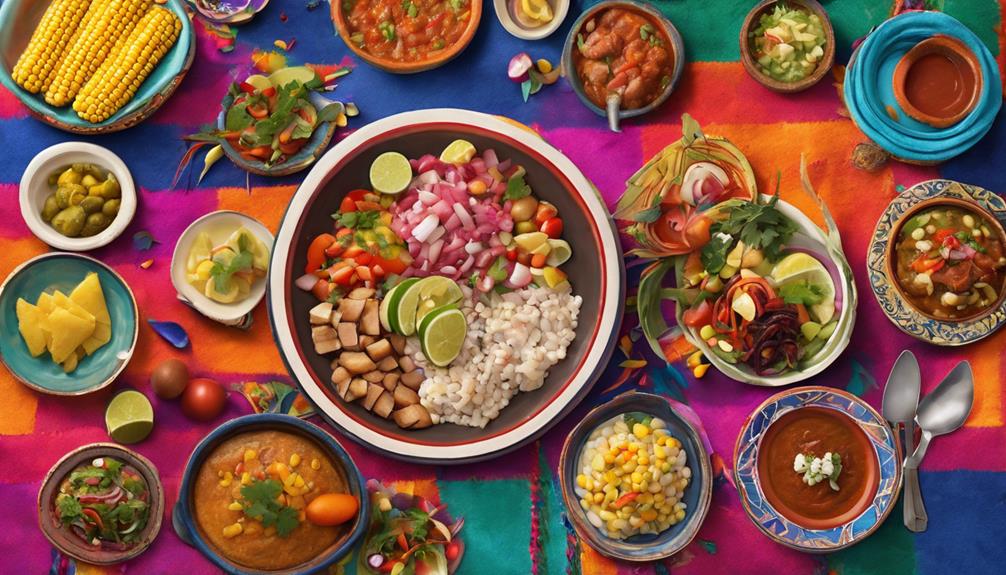How To: Preparing Baby Food Using Instant Pot
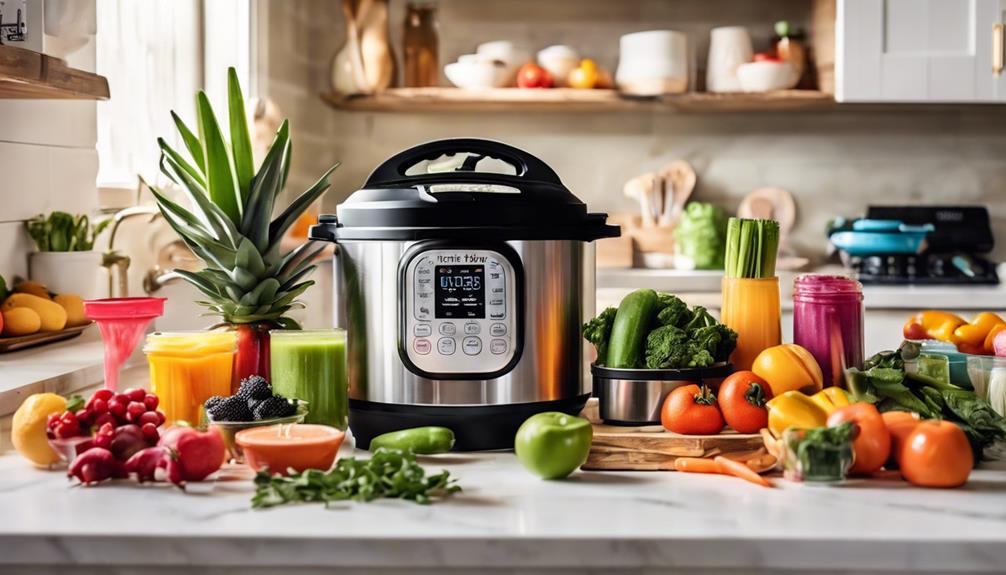
Preparing Baby Food Using Instant Pot is simple and efficient. You can steam, puree, and cook all in one device, saving you time while preserving essential nutrients. Start by choosing fresh, organic fruits and vegetables, and remember to introduce one new food at a time to monitor for allergies. Use the Instant Pot’s various settings to cook grains and legumes quickly. After cooking, blend the food until smooth, and store in ice cube trays for easy portions. With these tips and techniques, you can whip up nutritious meals for your little one in no time. There’s so much more to discover!
Benefits of Using Instant Pot
Using an Instant Pot for preparing baby food can save you time and effort, making it a game-changer for busy parents. With its multifunctional capabilities, you can steam, puree, and cook various ingredients in one device, eliminating the need for multiple pots and pans. This not only simplifies the cooking process but also minimizes cleanup time, giving you more moments to spend with your little one.
One of the biggest time-saving advantages of the Instant Pot is its ability to cook food quickly. Traditional cooking methods can take a while, especially when you’re trying to prepare multiple batches of baby food. The Instant Pot’s pressure cooking feature reduces cooking times considerably, meaning you can whip up healthy meals in a fraction of the time. You’ll appreciate how this efficiency fits into your busy routine.
Moreover, using an Instant Pot helps in nutritional preservation. The sealed environment retains essential vitamins and minerals that can be lost during conventional cooking methods. When you prepare fruits and vegetables for your baby, you want to guarantee they’re getting the best nutrition possible. The Instant Pot locks in flavor and nutrients, so your homemade baby food not only tastes great but also supports your child’s healthy development.
Essential Ingredients for Baby Food
When it comes to making baby food, choosing the right ingredients is vital for guaranteeing your little one gets the nutrients they need. Start with fresh fruits and vegetables, as they’re packed with vitamins and minerals. Opt for organic options whenever possible. Organic produce typically has fewer pesticides, making it a healthier choice for your baby.
Consider the nutritional considerations for your baby’s age and developmental stage. For younger infants, focus on single-ingredient purees like sweet potatoes, carrots, or apples, which are easy to digest. As your baby grows, you can introduce more complex combinations, such as mixing peas with brown rice or adding spinach to mashed avocado.
Don’t forget about protein sources, too. Foods like lentils, beans, and quinoa can be great additions to your baby food repertoire. They provide essential amino acids and help support healthy growth. Just make sure to cook and puree these ingredients well to guarantee smooth textures.
For healthy fats, consider adding a bit of avocado or coconut oil to your purees. These fats are important for brain development and can make meals more satisfying for your little one.
Choosing the Right Instant Pot
When you’re picking the right Instant Pot for making baby food, size really matters. You’ll want to contemplate both the capacity and the essential features that suit your cooking needs. Let’s explore how these aspects can make your baby food preparation easier and more efficient.
Instant Pot Sizes Explained
Choosing the right Instant Pot size can make all the difference in your baby food preparation experience. When picking an Instant Pot, consider the instant pot capacity that best fits your needs. Most models come in three main sizes: 3-quart, 6-quart, and 8-quart. If you’re just starting out or preparing small batches of baby food, a 3-quart pot is often sufficient. It’s compact and easy to store, making it ideal for smaller kitchens.
On the other hand, if you plan to make larger quantities or cook for multiple children, a 6-quart or 8-quart Instant Pot may be a better fit. The 6-quart model is the most popular choice, offering a good balance between size and versatility. The 8-quart pot is perfect for batch cooking or meal prepping.
Keep in mind that different instant pot types, like the Duo or the Ultra, may have the same capacity but come with varying features. So, it’s important to match the size of your Instant Pot with your cooking habits. Ultimately, choosing the right size guarantees that you’ll have an efficient and enjoyable baby food preparation experience.
Essential Features to Consider
To guarantee your baby food preparation goes smoothly, consider the essential features of the Instant Pot that best suit your needs. First, think about the size. If you’re making batches of baby food, a larger capacity might be beneficial. The 6-quart model is popular for families, but if you’re just starting out, a 3-quart version could be sufficient.
Next, check for multiple cooking functions. Look for an Instant Pot that offers steam, sauté, and pressure cooking, as these features allow you to prepare a variety of baby food textures. A model with a slow-cook option can also be handy for making homemade purees.
Don’t forget safety features, like a secure locking lid and anti-blockage vent. These guarantee that your cooking experience is safe and hassle-free. Additionally, a programmable timer can help you set cooking times and walk away, giving you more freedom to attend to your little one.
Preparing Fruits for Baby Food
Preparing fruits for baby food is a fun and rewarding process that allows you to introduce your little one to wholesome flavors. Start by selecting the right fruits based on their ripeness. Ripe fruits not only taste better but are also easier to puree. For example, bananas and avocados are perfect when they’re soft and spotty, while peaches and pears should yield slightly when you press them.
Once you’ve chosen your fruits, wash them thoroughly to remove any pesticides or dirt. You can steam or cook them in your Instant Pot to soften them further, depending on the fruit. For harder fruits like apples or pears, peel and chop them before cooking, as this will make blending easier. You can use the pot’s steam function for about 5-10 minutes to achieve a smooth consistency.
Don’t hesitate to experiment with flavor combinations! Mixing fruits can introduce your baby to a variety of tastes. For instance, combining apples and bananas creates a naturally sweet puree, while mixing pears with a hint of cinnamon can add a warm flavor. Always remember to introduce new flavors one at a time to monitor for allergies.
After cooking, blend the fruits until smooth, adding water or breast milk to adjust the consistency if needed. Store your purees in ice cube trays or small containers for easy portioning. Your baby’s culinary adventure is just beginning, so enjoy the process and have fun!
Preparing Vegetables for Baby Food
When it comes to preparing vegetables for baby food, choosing the right ones is key. You’ll want to focus on nutritious options that are easy to digest. Once you’ve picked your veggies, understanding the best cooking methods can make all the difference in texture and flavor.
Choosing the Right Vegetables
Choosing the right vegetables for your baby’s first meals is essential for their nutrition and development. Opt for vegetables that are rich in vitamins and minerals, as these will help support your baby’s growth. Focus on seasonal selections, as they tend to be fresher, tastier, and more nutrient-dense.
Start with mild options like sweet potatoes, carrots, and peas. These vegetables are not only nutritious but also have a naturally sweet flavor that babies usually enjoy. As your little one gets accustomed to solids, you can introduce leafy greens like spinach and kale, which are excellent sources of iron and other essential nutrients.
Always wash and peel the vegetables to guarantee they’re safe for your baby. When selecting, look for firm, unblemished produce. Avoid any that show signs of spoilage, as their vegetable nutrition can be compromised.
Remember to introduce one new vegetable at a time. This way, you can monitor your baby’s reaction and identify any potential allergies. By choosing the right vegetables and making informed selections, you’re setting the foundation for a healthy eating habit as they grow.
Cooking Methods Explained
Cooking vegetables for baby food can really enhance their flavor and nutritional value. To prepare veggies, you’ve got a couple of great options: steaming methods and sautéing techniques.
Steaming is a popular choice, as it preserves most of the nutrients. You can easily use your Instant Pot for this. Just add a cup of water to the pot, place the vegetables in the steamer basket, and set it to cook on high pressure for a few minutes. This method allows the vegetables to become soft and easily mashable, perfect for your little one.
On the other hand, sautéing can add a delicious depth of flavor. Simply heat a little olive oil or butter in the pot, then toss in the chopped vegetables. Sauté them for a few minutes until they’re tender. You can even add herbs or spices to enhance the taste, just be cautious with strong flavors.
Once cooked, blend the vegetables to the desired consistency. Whether you steam or sauté, you’re on your way to creating nutritious, tasty baby food that your child will love. Enjoy experimenting with different vegetables and techniques!
Cooking Grains and Legumes
How can you guarantee your baby’s grains and legumes are both nutritious and easy to digest? The answer lies in choosing the right types and preparing them correctly. Grains nutrition is essential for your baby’s growth, as these foods provide crucial energy and essential nutrients. Opt for whole grains like quinoa, brown rice, or oats, which are higher in fiber and more nutrient-dense than their refined counterparts.
When it comes to legumes preparation, soaking is a key step. Soaking beans and lentils for several hours or overnight helps soften them, making them easier to cook and digest. This process also reduces anti-nutrients that can interfere with digestion and nutrient absorption. Once soaked, you can use your Instant Pot to cook them quickly and efficiently.
For grains, rinsing is a must. This helps remove any impurities and dust, ensuring your baby’s food is clean and safe. When you’re ready to cook, follow the recommended water-to-grain or water-to-legume ratios for your Instant Pot. This will guarantee that they come out perfectly tender without being mushy.
Step-by-Step Cooking Process
After you’ve soaked your legumes and rinsed your grains, it’s time to move on to the actual cooking process. First, gather your Instant Pot, the soaked legumes or grains, and the amount of water specified in your recipe. For legumes, you’ll generally want a 1:3 ratio of legumes to water, while grains usually require a 1:2 ratio.
Next, set your Instant Pot to the “Beans/Chili” or “Grain” setting, depending on what you’re cooking. For most legumes, you’ll cook them for about 30-40 minutes. Grains typically take about 10-15 minutes. If you’re using ingredient substitutions, like swapping lentils for chickpeas, adjust your cooking time accordingly, as different legumes have varying cooking times.
Once the timer goes off, allow the pressure to release naturally for about 10 minutes before performing a quick release. This method helps in achieving the right baby food textures. After releasing the pressure, carefully remove the lid and check your legumes or grains for doneness. They should be soft and easily mashed.
If you find they’re still hard, you can always add a bit more water and cook them for an additional few minutes. Remember, the key to successful baby food is ensuring that ingredients are well-cooked and soft enough for your little one. After cooking, you’re ready to move on to pureeing or mashing the food to your desired consistency, perfect for your baby’s developing palate.
Tips for Pureeing Baby Food
When it comes to pureeing baby food, the right tools make all the difference. A high-quality blender or food processor is essential for achieving the smooth texture your baby needs. Start with texture tips: for younger babies, aim for a very smooth puree, while older babies may enjoy a coarser consistency.
When preparing your baby food, consider nutrient preservation by steaming rather than boiling vegetables. This method helps retain vitamins and minerals, ensuring your little one gets the best nutrition possible. Batch cooking is a great approach, allowing you to prepare multiple servings at once. Once pureed, you can use freezing methods to store portions in ice cube trays, which makes it easy to thaw just what you need.
As you experiment with purees, think about seasoning suggestions. Keep it simple; herbs like basil or a pinch of cinnamon can enhance flavors without overwhelming your baby’s palate. Be mindful of food allergies, and introduce new ingredients one at a time.
Meal planning can save you time and stress. Create a weekly menu that includes a variety of purees, utilizing ingredient substitutions if needed. For example, swap sweet potatoes for carrots if you’re out. Finally, consider serving temperatures; warm your purees slightly but avoid overheating, as it can destroy nutrients. By following these tips, you’ll create delicious, healthy baby food that your little one will love!
Flavor Combinations for Variety
What flavor combinations can you try to keep your baby’s meals exciting and nutritious? Experimenting with different flavors not only piques your baby’s interest but also provides a range of nutrients. Start by incorporating herb infusions into your baby food. Fresh herbs like basil, dill, or cilantro can elevate simple vegetable purees. For example, blend steamed peas with a touch of mint for a revitalizing twist, or mix sweet potatoes with a hint of thyme for a warm, comforting flavor.
Next, consider spice enhancements. While you’ll want to keep things mild, introducing spices like cinnamon, nutmeg, or turmeric can add depth to your baby’s meals. Try mixing cinnamon into applesauce or adding a dash of nutmeg to butternut squash puree. These subtle enhancements not only introduce new tastes but can also offer health benefits.
Another great combo is mixing fruits and vegetables. For instance, blend spinach with ripe bananas for a nutrient-dense snack or pair carrots with peaches for a sweet treat. Don’t shy away from blending different textures too; creamy avocado mixed with a bit of lime juice can create a deliciously smooth puree.
Lastly, keep a journal of your flavor combinations. Jot down what your baby enjoys most, so you can repeat their favorites. With these ideas, you’ll be well on your way to preparing exciting and nutritious meals for your little one!
Storing Homemade Baby Food
Storing homemade baby food properly is vital for maintaining its freshness and nutritional value. After you’ve prepared your delicious baby food using your Instant Pot, it’s time to think about how to store it effectively. One of the best methods is to use freezing techniques, which can extend your food’s shelf life while preserving its nutrients.
Start by allowing the baby food to cool completely before storing. This step is important, as it prevents condensation and ice crystals from forming, which can affect texture and taste. Use ice cube trays or silicone molds to portion out the food. These containers are perfect for portion control, letting you thaw only what you need for each feeding. Once the food is frozen solid, transfer the cubes into freezer-safe bags or airtight containers. Be sure to label each bag with the date and type of food to keep track of what you have on hand.
When you’re ready to use the frozen baby food, simply take out the desired portion and thaw it in the fridge overnight or use a microwave. Avoid refreezing thawed food, as this can diminish its quality. Properly stored, your homemade baby food can last up to three months in the freezer. With these strategies, you’ll guarantee your little one enjoys wholesome meals without the stress of daily preparation.
Safety Tips for Baby Food
Making sure your baby food is safe to eat is vital for your little one’s health. Food safety should always be your top priority when preparing meals for your baby. Start by washing your hands thoroughly before handling any ingredients. Clean all surfaces and utensils to prevent cross-contamination, especially if you’ve been working with raw foods.
Allergen awareness is essential when introducing new foods. The first time you offer a new ingredient, do it when you can closely monitor your baby for any adverse reactions. Common allergens include peanuts, tree nuts, dairy, eggs, soy, wheat, fish, and shellfish. Introduce these foods one at a time, waiting at least three days between each to identify potential allergies. If you notice any signs of an allergic reaction, such as hives, vomiting, or difficulty breathing, seek medical help immediately.
When cooking with an Instant Pot, make sure you’re following the manufacturer’s guidelines for food safety. Always cook food to the appropriate temperature and avoid overloading the pot, as this can affect cooking times and lead to uneven heating. After cooking, refrigerate any leftovers promptly, and consume them within a few days.
Lastly, always check expiration dates on commercial baby food and remember to store homemade baby food in proper containers. By taking these steps, you’ll help make certain your baby’s meals are both nutritious and safe.
Transitioning to Solid Foods
Moving to solid foods is an exciting milestone for both you and your baby, marking the shift from purees to a wider variety of textures and flavors. You’ll want to start this alteration around six months, when your baby is ready to explore first foods. It’s important to introduce one new food at a time, allowing a few days in between to monitor for any allergic reactions.
Begin with soft, easily digestible options like mashed bananas, avocados, or pureed sweet potatoes. These first foods are not only nutritious but also familiar in texture, making the change smoother. As your baby gets comfortable with these options, you can gradually introduce more complex textures. Try moving from purees to thicker mashed foods, and then to small, soft chunks.
Introducing textures is vital during this phase. It helps your baby develop chewing skills, even if they don’t have many teeth yet. Offer foods that require some gumming, like steamed carrots or soft-cooked peas. You can also explore different flavors and combinations to keep mealtime interesting.
Remember to pay attention to your baby’s cues—they’ll let you know if they’re hungry or full. Make mealtime a fun and relaxed experience, encouraging your little one to explore new foods. This journey into solid foods not only nourishes your baby but also sets the foundation for healthy eating habits as they grow. Enjoy every moment of this exciting new chapter!
Cleaning and Maintaining Instant Pot
Cleaning and maintaining your Instant Pot is essential for its longevity and performance. Regular care guarantees that your appliance continues to function effectively and prevents unpleasant odors or residue buildup. Start with basic cleaning techniques after each use. Always unplug your Instant Pot and allow it to cool down before cleaning. Remove the inner pot, lid, and sealing ring. Wash these components in warm, soapy water or place them in the dishwasher for convenience.
For tougher stains or odors, soak the sealing ring in a mixture of baking soda and water. This helps eliminate lingering smells. Don’t forget to clean the steam release valve and the anti-block shield, as food particles can accumulate here. Use a soft brush or cloth to gently scrub these areas.
As for maintenance tips, regularly inspect the sealing ring for any signs of wear or damage. If it’s stretched or cracked, it’s time to replace it. Additionally, verify that the float valve moves freely and isn’t stuck. Keep the exterior of your Instant Pot clean by wiping it down with a damp cloth. Avoid using abrasive cleaners that might scratch the surface.
Recipe Ideas for Baby Food
Now that you’ve got your Instant Pot ready, let’s explore some tasty recipe ideas for baby food. You can easily whip up pureed vegetable combos, delightful fruit blends, and nutritious grain and protein mixes. These simple recipes will help introduce your little one to a variety of flavors and textures.
Pureed Vegetable Combos
As your baby begins to explore new flavors, incorporating pureed vegetable combos can be a fun and nutritious way to introduce them to a variety of tastes. Start with simple combinations like sweet potato and carrot or peas and spinach. These mixes not only offer diverse flavors but also pack a punch with regards to vegetable nutrition.
When preparing your purees, consider your baby’s texture preferences. Some babies may prefer a smoother consistency, while others might enjoy a slightly chunkier blend. You can easily adjust the texture by adding a little water or broth during the cooking process. The Instant Pot makes this incredibly easy; just steam your vegetables, blend, and serve!
Try experimenting with different combinations as your baby grows more accustomed to eating solids. Broccoli and cauliflower, or zucchini and green beans, can introduce new tastes while ensuring your baby gets a range of nutrients. Remember, it’s all about discovering what your little one enjoys while keeping their meals healthy. With these vegetable combos, you’ll be on your way to creating delicious, nutritious meals that your baby will love!
Fruit Blends for Babies
Fruit blends can be a delightful way to introduce your baby to the world of flavors while providing essential nutrients. Using fruit puree techniques, you can create smooth, tasty purees that are perfect for little ones. Start by selecting seasonal fruit combinations like ripe peaches and blueberries or apples and pears. These fruits not only taste great together but also guarantee your baby gets a variety of vitamins.
To prepare, simply wash, peel, and chop the fruits into small pieces. Then, place them in your Instant Pot with a splash of water. Cook on high pressure for just a few minutes, allowing the fruits to soften. Once done, use a blender to puree the mixture until it reaches the desired consistency. You can adjust the thickness by adding more water or breast milk.
Don’t shy away from mixing flavors! Try combining bananas with spinach for a nutrient boost or mango with avocado for creaminess. As your baby grows, you can experiment with adding spices like cinnamon or ginger for extra flavor. Enjoy this fun and nutritious journey into baby food preparation!
Grain and Protein Mixes
Introducing grains and proteins into your baby’s diet opens up a world of nutritious possibilities. These ingredients not only provide essential nutrients but also introduce delightful grain textures that can enhance your baby’s meals.
Start by cooking quinoa or brown rice in your Instant Pot, as they’re excellent protein sources and easy to digest. Combine these grains with pureed lentils or chickpeas for added protein. Simply cook your chosen grains according to the Instant Pot instructions, then blend them with the legumes until smooth. You can add a little water or breast milk to achieve the desired consistency.
For variety, try mixing oats with pureed chicken or turkey. Cook rolled oats in the Instant Pot, then blend in cooked, shredded poultry. This combo offers a creamy texture and a savory flavor that your baby will love.
Another tasty option is millet mixed with pureed peas. Cook millet in the Instant Pot, then blend with steamed peas for a vibrant green mix. These grain and protein combinations not only nourish your baby but also encourage exploration of different flavors and textures. Enjoy watching your little one discover new favorites!
Frequently Asked Questions: Preparing Baby Food Using Instant Pot
Can I Cook Multiple Types of Baby Food Simultaneously in the Instant Pot?
Yes, you can cook multiple types of baby food simultaneously in the Instant Pot. By batch cooking and using compatible food combinations, you’ll save time and guarantee a variety of nutritious options for your baby.
What Is the Best Way to Thaw Frozen Baby Food?
To thaw frozen baby food, try placing it in the fridge overnight or using a microwave on low. Remember storage tips: keep small portions for easy thawing and avoid refreezing thawed food to maintain quality.
How Can I Tell if Baby Food Has Spoiled?
You can tell if baby food has spoiled by checking for spoilage signs like off smells, discoloration, or mold. Always follow storage tips, such as keeping food in airtight containers and refrigerating promptly to prevent spoilage.
Are There Any Allergens to Avoid in Homemade Baby Food?
When making homemade baby food, you should avoid common allergens like dairy, eggs, peanuts, and tree nuts. Consider allergen substitutions like oat milk or mashed bananas to guarantee your baby enjoys safe, nutritious meals.
How Can I Introduce New Flavors to My Baby’s Diet?
To introduce new flavors to your baby’s diet, try various flavor combinations. Start with simple ingredients, then gradually mix them. Engage in taste testing by offering small portions, allowing your baby to explore different tastes delightfully.
Conclusion
To sum up, using an Instant Pot to prepare baby food makes the process quick, easy, and nutritious for your little one. By following the tips and recipes outlined, you’ll be well-equipped to create delicious meals that cater to your baby’s needs. Remember to prioritize safety and cleanliness, and enjoy the journey of introducing your child to solid foods. With a bit of practice, you’ll become a pro at whipping up tasty and healthy baby food in no time!



